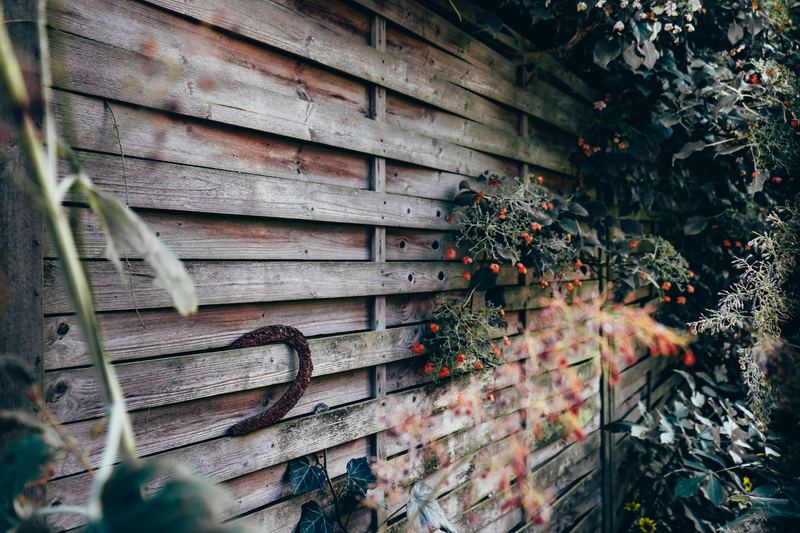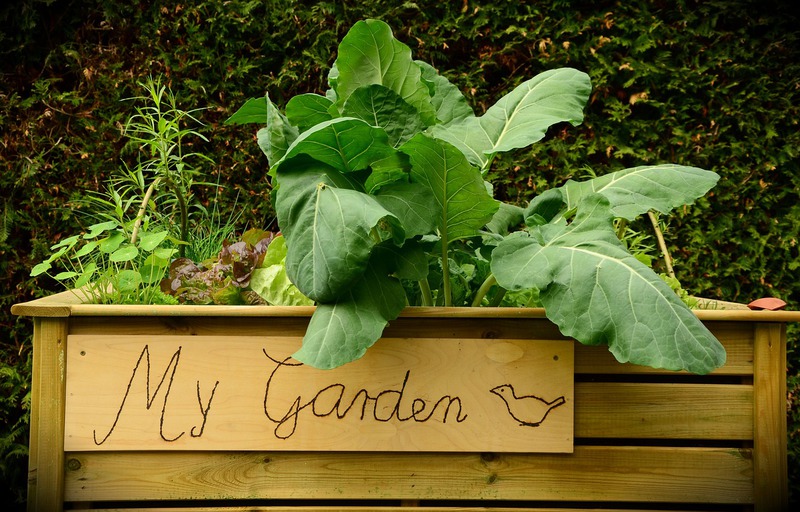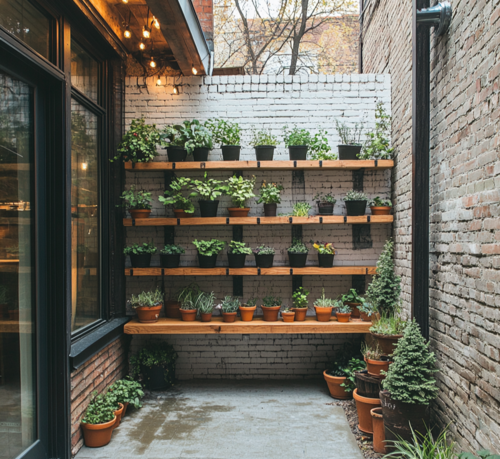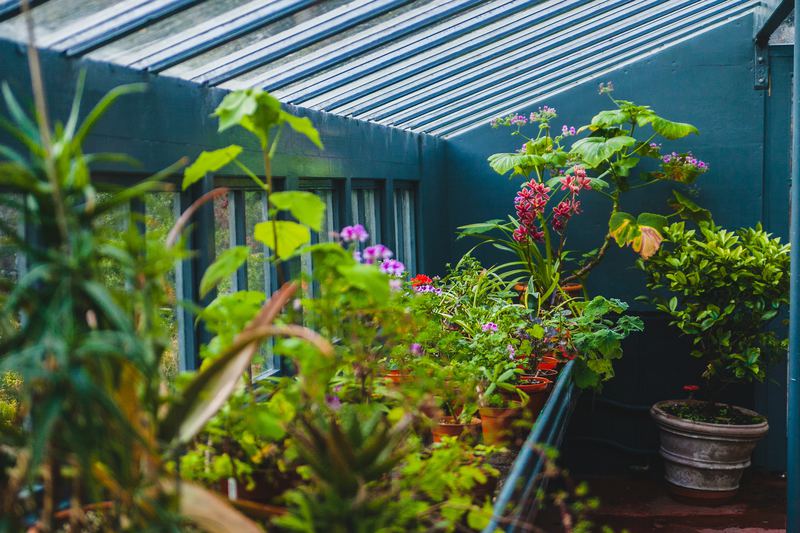Top Ideas for Creating a Protected Garden
Introduction
Gardening in your backyard can be a rewarding experience, but it often comes with its challenges, including uninvited guests and pests . From curious children picking your plants to animals looking for a snack, protecting your garden is essential for its success. In this blog, we’ll explore several creative and practical ideas to keep your garden safe and thriving, no matter your living situation or available space.
Fencing and Walls: A Strong First Line of Defense
For those with a backyard garden, fencing or walls can be an excellent way to safeguard your plants. Depending on your location, you might need protection from deer, rabbits, moose, or even bears. A sturdy barrier can make all the difference.

A Rustic Fence Decorated with Lush Greenery and Red Berries – Thomas Hafeneth , CC0, via Wikimedia Commons
How to Build a Fence or Wall for Your Garden
1. Choose the Right Material:
- Options include wood, stone, brick, or metal.
- Consider the durability of materials to withstand local weather conditions and the aesthetics to ensure they complement your garden’s overall design and ambiance.
2. Plan Your Layout:
- Ensure enough space between the fence or wall and your plants for easy access.
- Measure the area and decide the height of your fence based on the pests you want to deter.
3. Install Your Fence or Wall:
- For fences, dig holes for the posts and fill them with gravel for drainage.
- Space out the posts evenly and attach your fencing material securely.
- If you want added security, include a garden gate for a completely enclosed area.
Raised Garden Beds
If space is limited or smaller pests like rabbits are your main concern, raised garden beds offer a practical solution. They not only protect your plants but also add a stylish element to your garden.

A Thriving Raised Garden Bed with Healthy Green Plants – Image by congerdesign on Pixabay
DIY Raised Garden Bed Instructions
To build a simple raised garden bed , you’ll need:
- Two 2×12 planks (4 feet long)
- Two 2×12 planks (8 feet long)
- 12 pieces of rebar (2 feet long)
- Newspaper or cardboard
- A rubber mallet
- Quality soil
Steps:
- Position the boards to form a rectangle on the ground.
- Use the rubber mallet to drive the first few inches of rebar into the ground, one foot from each corner.
- Add additional rebar for support, ensuring stability for each board.
- Line the bottom of the bed with newspaper or cardboard to prevent weeds.
- Fill the bed with nutrient-rich soil and start planting!
Alternative Materials: Consider using logs, concrete blocks, bricks, or even twigs for a creative touch.
Shelving: Make the Most of Vertical Space
If you already have a fence, wall, or limited ground space, shelving can maximize your gardening potential. This option is perfect for small plants, herbs, or decorative flowers.

A Charming Urban Patio with a Vertical Herb Garden and String Lights
Creative Shelving Ideas
- Recycled Materials: Use old wooden boards, mason jars, or ladders.
- Custom Shelves: Purchase ready-made shelves or build your own to suit your space.
Installation Tips:
- Securely mount shelves to avoid accidents.
- Arrange plants to ensure they receive adequate sunlight and ventilation.
Indoor Gardening: Bringing Nature Inside
If outdoor space isn’t an option, indoor gardening offers endless possibilities. From a few potted plants to an entire indoor garden, you can create a vibrant, green space within your home.

Lush Potted Plants and Flowers in a Sunlit Greenhouse – Image by Heather Mount on Unsplash
Tips for Indoor Gardening Success
- Choose the Right Plants: Opt for plants suited to indoor conditions , such as herbs, succulents, or ferns.
- Ensure Proper Lighting: Place plants in areas with ample natural light or invest in grow lights.
- Maintain Humidity and Watering: Regularly check the humidity levels, and consider hydroponics for a low-maintenance watering solution.
Final Thoughts: Protecting Your Garden Made Simple
No matter your gardening situation, these ideas provide practical ways to protect and enhance your garden. From sturdy fencing to innovative indoor setups, there’s a solution for everyone.
Let’s make your garden safe, thriving, and beautiful!
Which Idea Will You Try First?
We’d love to hear about your favorite gardening protection idea. Share your thoughts and experiences with us today!
Originally posted on September 21, 2018


